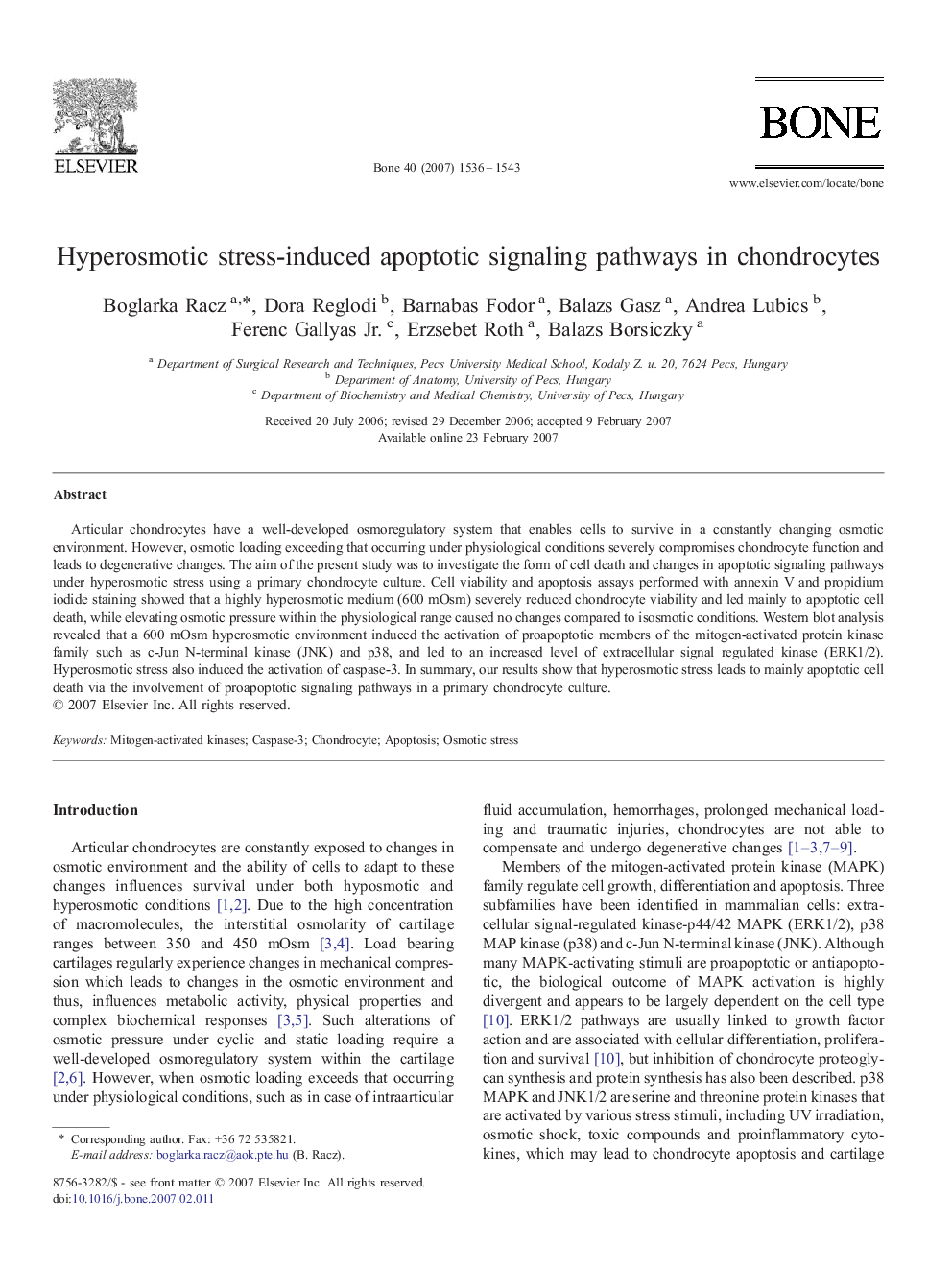| Article ID | Journal | Published Year | Pages | File Type |
|---|---|---|---|---|
| 2782019 | Bone | 2007 | 8 Pages |
Articular chondrocytes have a well-developed osmoregulatory system that enables cells to survive in a constantly changing osmotic environment. However, osmotic loading exceeding that occurring under physiological conditions severely compromises chondrocyte function and leads to degenerative changes. The aim of the present study was to investigate the form of cell death and changes in apoptotic signaling pathways under hyperosmotic stress using a primary chondrocyte culture. Cell viability and apoptosis assays performed with annexin V and propidium iodide staining showed that a highly hyperosmotic medium (600 mOsm) severely reduced chondrocyte viability and led mainly to apoptotic cell death, while elevating osmotic pressure within the physiological range caused no changes compared to isosmotic conditions. Western blot analysis revealed that a 600 mOsm hyperosmotic environment induced the activation of proapoptotic members of the mitogen-activated protein kinase family such as c-Jun N-terminal kinase (JNK) and p38, and led to an increased level of extracellular signal regulated kinase (ERK1/2). Hyperosmotic stress also induced the activation of caspase-3. In summary, our results show that hyperosmotic stress leads to mainly apoptotic cell death via the involvement of proapoptotic signaling pathways in a primary chondrocyte culture.
